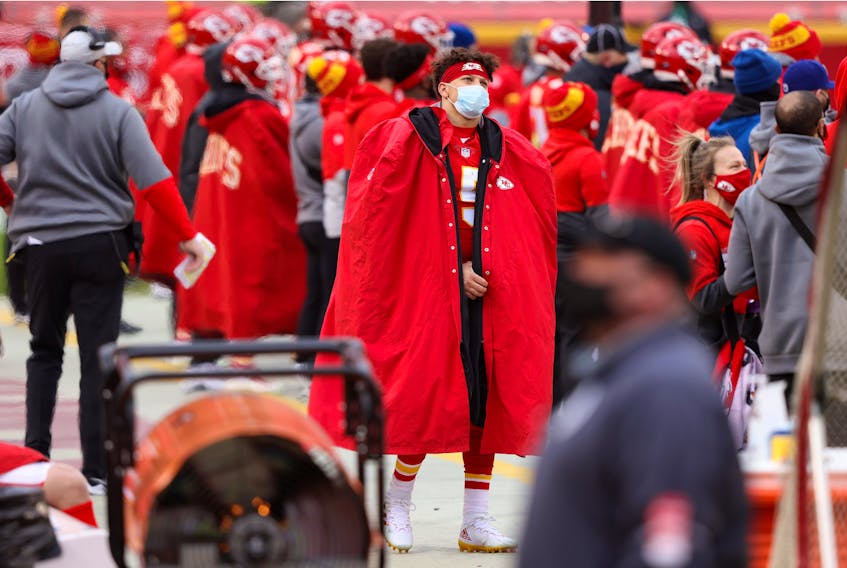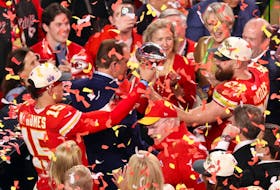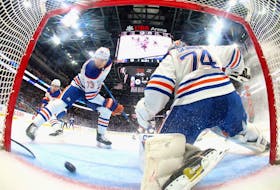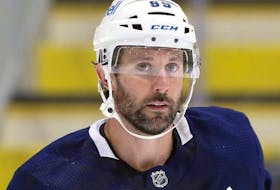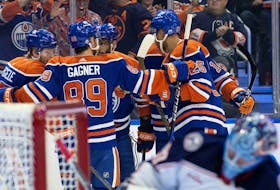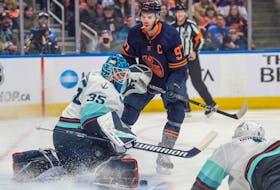In a surprise move, Patrick Mahomes practised fully on Wednesday, just three days after the Kansas City Chiefs announced that their star quarterback had been concussed against the Cleveland Browns.
Thus, the 2018 NFL MVP and reigning Super Bowl MVP indeed is on track to start and play Sunday against the Buffalo Bills, in the AFC championship game (6:30 p.m. EST, CTV via CBS).
There has been more than a little speculation and commentary this week about the timelines — and safety — pertaining to NFL’s return-to-play concussion protocol.
The facts are these.
While the NFL’s concussion diagnosis protocols and return-to-play steps — both in place for several years now — are in keeping with world-best standards, there are no minimum timelines attached to recovery.
Indeed, the NFL still does not implement a 24-hours-per-stage timeline in its graduated return-to-playing protocol for concussed players, as suggested (but not specially recommended) by the world’s premier authority on sport-concussion management.
As I wrote in detail about this in 2017, the NFL deserves credit for being the first major North American pro sport to incorporate — lock, stock and barrel — the concussion-diagnosis tests included in the international Sport Concussion Assessment Tool (fifth edition, SCAT5, still the most recent version).
That said, the league still has not adopted any minimum recovery times associated with SCAT5’s sequential return-to-play recovery steps.
They are:
- symptom-limited activity
- light aerobic exercise
- sport-specific exercise
- non-contact training drills
- a full-contact practice, before normal game competition.
SCAT 5, published in April 2017, stated “it would be typical to have 24 hours (or longer) for each step of this progression.”
The NFL accordingly overhauled its diagnosis and recovery tools in July 2017, and has since tweaked them for additional safety.
Since 2017 the league requires that a concussed player be monitored daily, “or more frequently if clinically indicated in the opinion of the team physician,” in the following sequential, return-to-action protocol, following however much rest and recovery is required:
- limited cognitive, physical and aerobic activity;
- continued aerobic exercise and the introduction of strength training;
- football specific activities up to 30 minutes;
- football training drills excepting contact with other players or objects;
- and, finally, full clearance by a club physician as well as by an independent neurological consultant assigned to that club.
These steps comply with SCAT5’s, the only big difference being the NFL officially puts “no set timeline for return to play or progression through the protocol.”
And that’s how Mahomes — concussed on Sunday — could be cleared to practise fully just three days later, on Wednesday.
Scandalously fast? You may say yes.
There’s no NFL rule preventing it.
Dr. Allen Sills, the NFL’s chief medical officer since 2017, is an internationally respected expert in concussion management. He is a professor of neurological surgery at Vanderbilt University’s renowned medical centre in Nashville, where he founded and co-directed the Vanderbilt Sports Concussion Center.
Sills was one of the authors of SCAT5, along with 23 other prominent world concussion experts.
In an August 2017 phone interview with Postmedia, Sills explained how the first SCAT authors arrived at a suggested concussion-recovery timeline, why it has not been made a rigid SCAT recovery principle, and why the NFL did not incorporate it.
Sills said SCAT authors always have used evidence ranging from the “highest levels,” such as randomized perspective studies, to the “lowest level,” which is mere expert opinion.
“The 24-hours-per-stage rule actually came out of expert opinion from one of the very early concussion-consensus documents,” Sills said. “So there never really has been any evidence supporting that, and obviously it’s a bit challenging to study as well.
“So we (in the NFL) are always going to err on the side of being cautious, and it’s certainly not meant that we would rush someone back through, in a matter of hours or days. But I think that (SCAT authors) felt there is no evidence to support a rigid, 24-hours-per-stage return. And that’s why in the NFL’s protocol we have not specified that as an absolute number.”
Since 2017, most concussed NFL players typically do not practise a few days later, as Mahomes did Wednesday.
There have been other exceptions, one being backup New Orleans Saints quarterback Taysom Hill just this month. He was concussed in the regular-season finale on Sunday, Jan. 3, was a limited participant in practice on Wednesday, Jan. 6, was a full practice participant on Thursday, Jan. 7 — then played Sunday, Jan. 10 against Chicago in an NFC wild-card game.
What did Mahomes’ in-depth locker-room examination this past Sunday entail, immediately following the hard but legal, neck-wrenching tackle leveled on him by Browns linebacker Mack Wilson?
Sills, four years ago, summarized the NFL’s then new locker-room concussion assessment protocol: A discussion of how the injury occurred; a neck examination; a “thorough neurological examination of the major cranial nerves, motor and sensory systems; gait assessment; and then a cognitive assessment of immediate and delayed recall, as well as concentration.”
An example of one of the recall tests, Sills said, is asking the potentially concussed player to repeat backward various sets of three, single-digit numbers. So if he hears “6-7-3” he must say it “3-7-6,” and so on.
It might seem strange that, according to Kansas City head coach Andy Reid following Sunday’s game, Mahomes “passed all the tests” after being pulled.
If true, then why was Mahomes not allowed to return to play?
Well, consider the following automatic “no go” symptoms added to the NFL’s concussion-diagnosis protocol in 2017, and since.
When a player has exhibited or self-described any one of (1) loss of consciousness, (2) confusion or (3) amnesia, (4) impact seizure, or (5) so-called “fencing” response (peculiar positioning of an arm or arms), he is immediately deemed to be concussed and may not return to play that day, irrespective of how he performs on immediately administered concussion tests.
Furthermore, since 2018 any player “demonstrating gross motor instability (e.g., stumbling or falling to the ground when trying to stand)” — as happened with Mahomes on Sunday — must be evaluated. And if his instability is determined by a team doctor in consultation with his sideline’s assigned, unaffiliated neurortrauma consultant to be “neurologically caused,” then this too qualifies as a “no go” symptom, and the player is done for the day.
Presumably, the latter occurred with Mahomes.
Many of the NFL’s concussion critics were skeptical we’d ever see the day when a superstar quarterback would be pulled from a playoff game, because they were skeptical the league’s protocol updates since 2017 would be earnestly administered, or acted upon.
That Mahomes was so benched Sunday in the basically the Super Bowl quarter-finals — and that the league’s 2019 MVP, Baltimore quarterback Lamar Jackson, too, was pulled for good the evening before in Buffalo, after similarly being diagnosed with a concussion on a hit that was anything but head-crushing — ought to put to bed for good those concerns.
As unfashionable as it might be to say this, the NFL deserves credit for taking concussions seriously. Even if you disagree with the absence of minimum timelines in its return-to-play protocol, as I do.
@JohnKryk
Copyright Postmedia Network Inc., 2021

